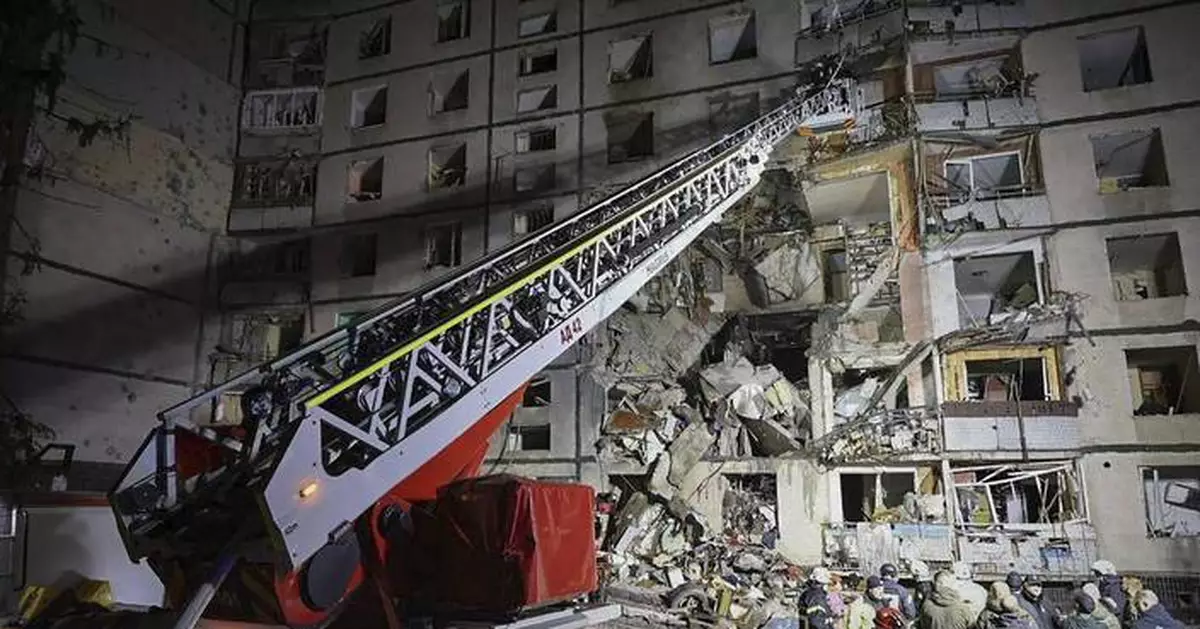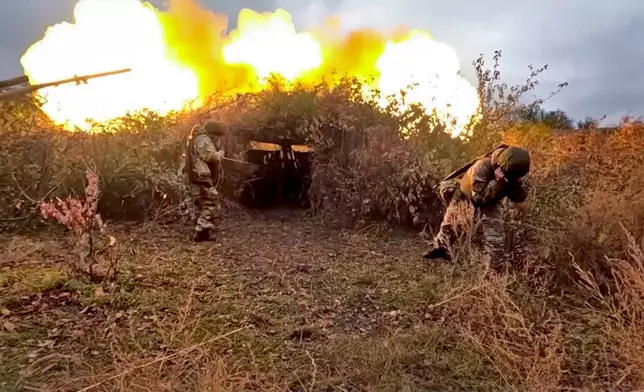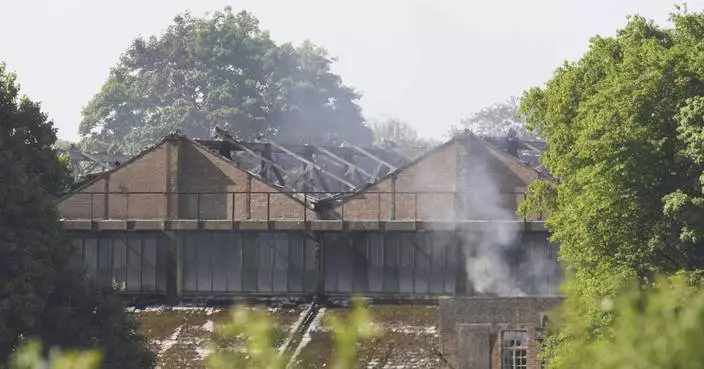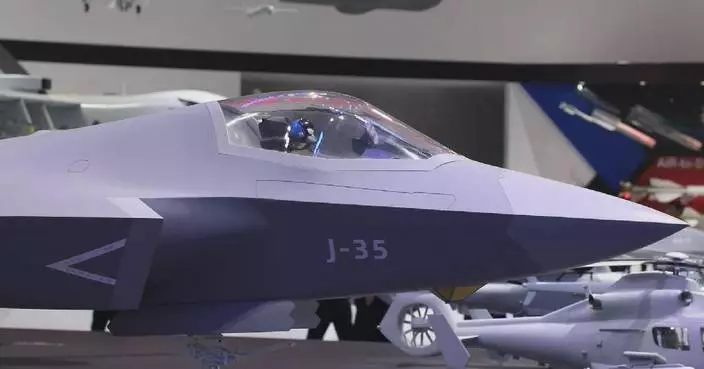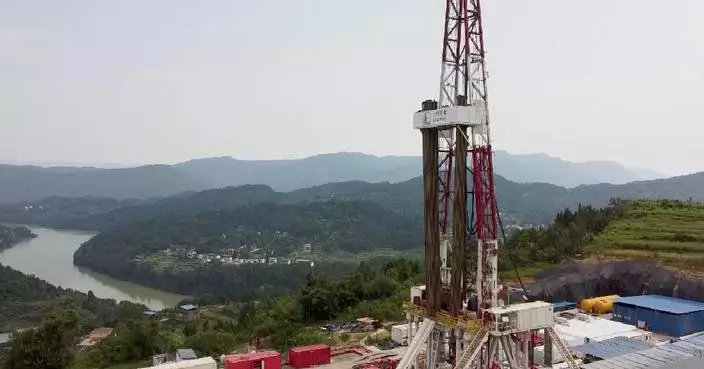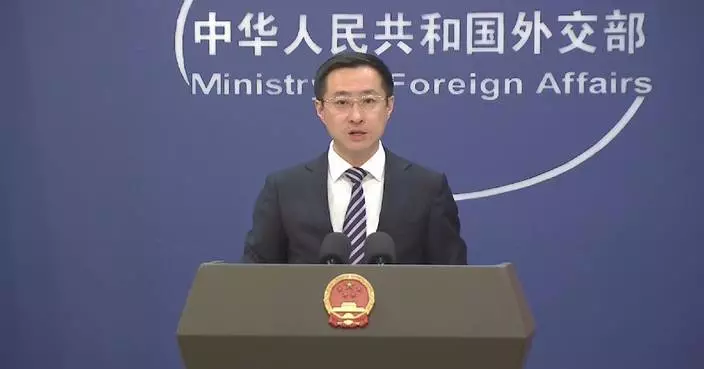KYIV, Ukraine (AP) — Russian forces struck a residential building in Ukraine's second-largest city of Kharkiv on Thursday, killing two, including a 12-year-old boy, and injuring scores of others, and launched scores of other attacks as they continued their grinding onslaught in the country's east.
Regional head Oleh Syniehubov said the boy was fatally injured when the building was hit by a Russian 500-kilogram (1,100-pound) glide bomb.
“He was freed from under the rubble with severe head injuries and fractures," Syniehubov wrote on social media. "Doctors performed resuscitation measures for more than half an hour. Unfortunately, it was not possible to save the child.”
Syniehubov said later that rescuers also retrieved the body of an unidentified man from the debris.
Interior Minister Ihor Klymenko said at least 35 people were injured in the attack and others could still be trapped under the rubble, including a missing 15-year-old boy.
Russia has increasingly used powerful glide bombs to pummel Ukrainian positions along the 1,000-kilometer (600-miles) line of contact and strike cities dozens of kilometers (miles) from the front line. Kharkiv, a city of 1.1 million, is about 30 kilometers (less than 20 miles) from the border.
President Volodymyr Zelenskyy has repeatedly urged the United States to allow Ukraine to use long-range American missiles to strike air bases deeper in Russia that are used by aicraft carrying glide bombs. Washington so far has only allowed some strikes close to the border.
Zelenskyy repeated his request Thursday, publishing a video showing the ravaged building, at least three of its floors destroyed and the rest of it seriously damaged.
“Partners see what is happening every day," Zelenskyy wrote on Telegram. "And under these conditions, each of their delayed decisions means at least dozens, if not hundreds of such Russian bombs against Ukraine. Their decisions are the lives of our people. Therefore, we must together stop Russia and do it with all possible force.”
Early Thursday, Russia also fired 10 missiles of various types at the Dniester Estuary bridge that connects the northern and southern parts of the Odesa region, Ukraine's air force said, adding that only two of them were intercepted. It didn't say whether the bridge was hit.
Russian forces also sent 43 exploding drones over at least nine Ukrainian regions, the air force said. It said 17 were shot down, 23 jammed and three flew back to Russian-controlled territories.
The head of Kyiv city administration, Serhii Popko, said debris from some of the drones that were intercepted over the capital fell in the Podil district just north of downtown, causing minor damage. According to Popko, there was only one day in October in which Kyiv residents did not hear an air alert. During the month, Kyiv experienced two air alerts per day on average, repelling 20 actual aerial attacks targeting the city.
In the country's east, Russian forces continued their slow but steady assault, trying to capitalize on Ukrainian shortages of manpower and ammunition. In Moscow, the Defense Ministry reported the capture of the village of Yasna Polyana in the Donetsk region that lies on the way to the well-fortified Ukrainian stronghold of Kurakhove.
Ukraine struck back Thursday with drone attacks.
Authorities in the Russia-occupied city of Berdyansk on the Sea of Azov reported a drone attack on the port early Thursday, saying three people were injured.
Russia’s Defense Ministry said air defenses on Thursday downed 21 Ukrainian drones over several regions and the Black Sea.

In this photo taken from video distributed by Russian Defense Ministry Press Service on Wednesday, Oct. 30, 2024, Russian soldiers fire a 152 mm gun Giatsint-B from their position at an undisclosed location in Ukraine. (Russian Defense Ministry Press Service via AP)
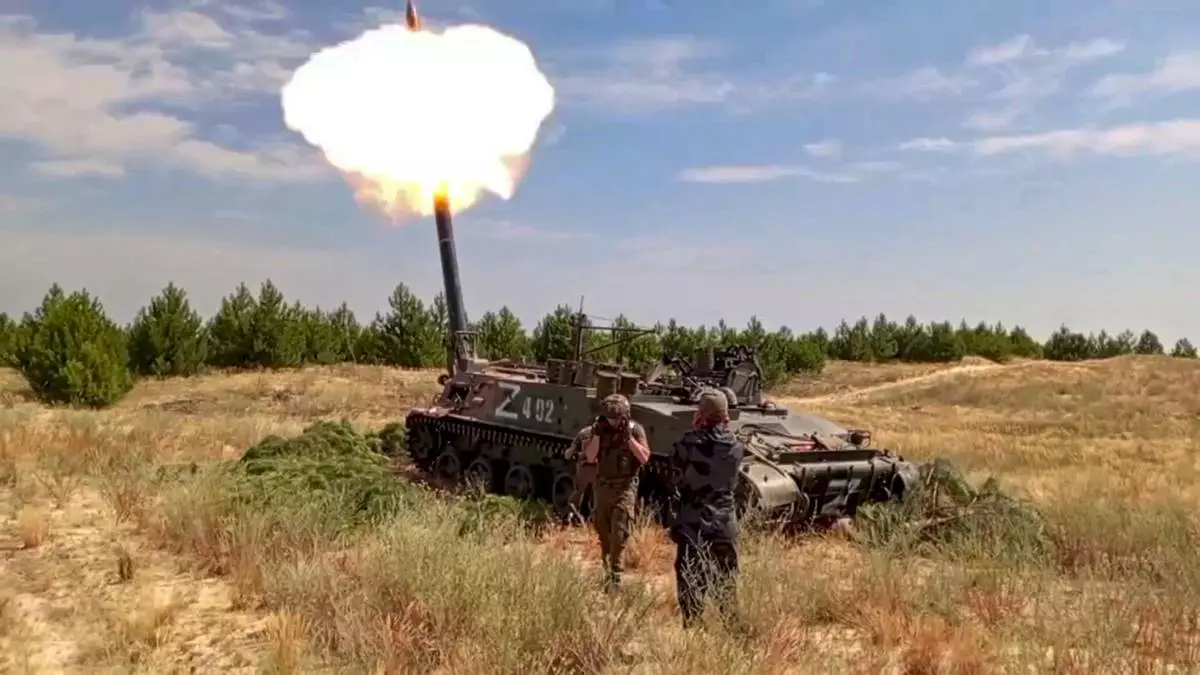
In this photo taken from video distributed by Russian Defense Ministry Press Service on Wednesday, Oct. 30, 2024, Russian soldiers fire a Tyulpan self-propelled heavy mortar from their position at an undisclosed location in Ukraine. (Russian Defense Ministry Press Service via AP)
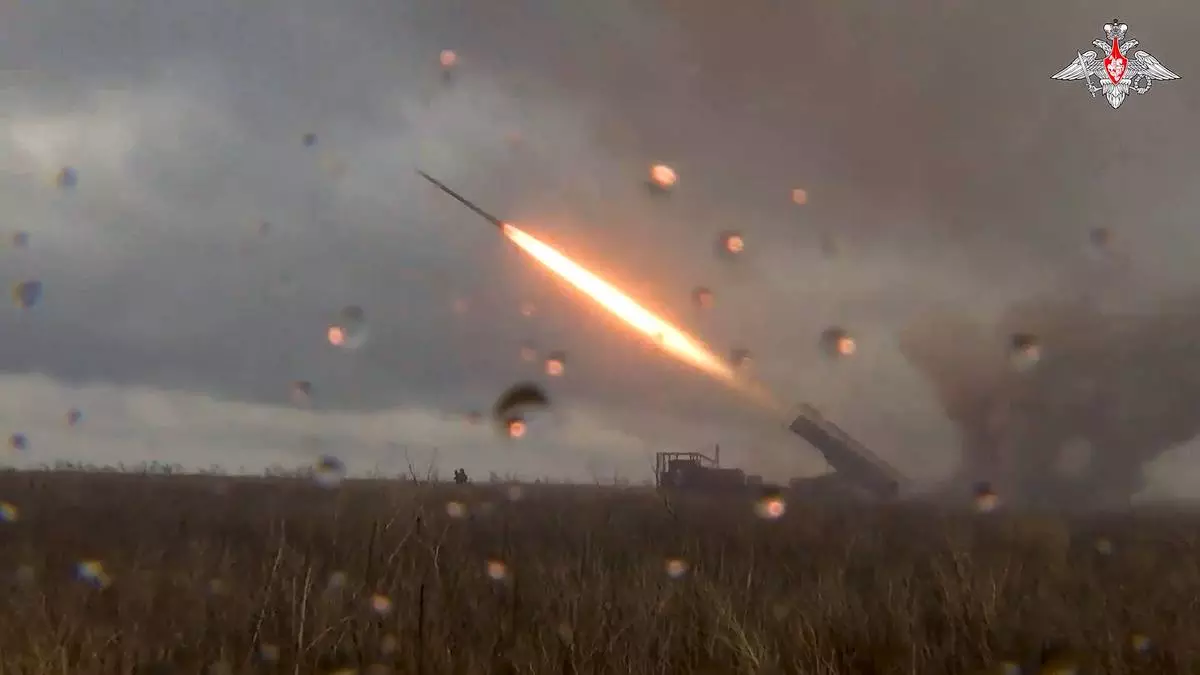
In this photo taken from video distributed by the Russian Defense Ministry Press Service on Wednesday, Oct. 30, 2024, a Russian self-propelled multiple rocket launcher Uragan (Hurricane) fires toward Ukrainian position at an undisclosed location in Ukraine. (Russian Defense Ministry Press Service via AP)
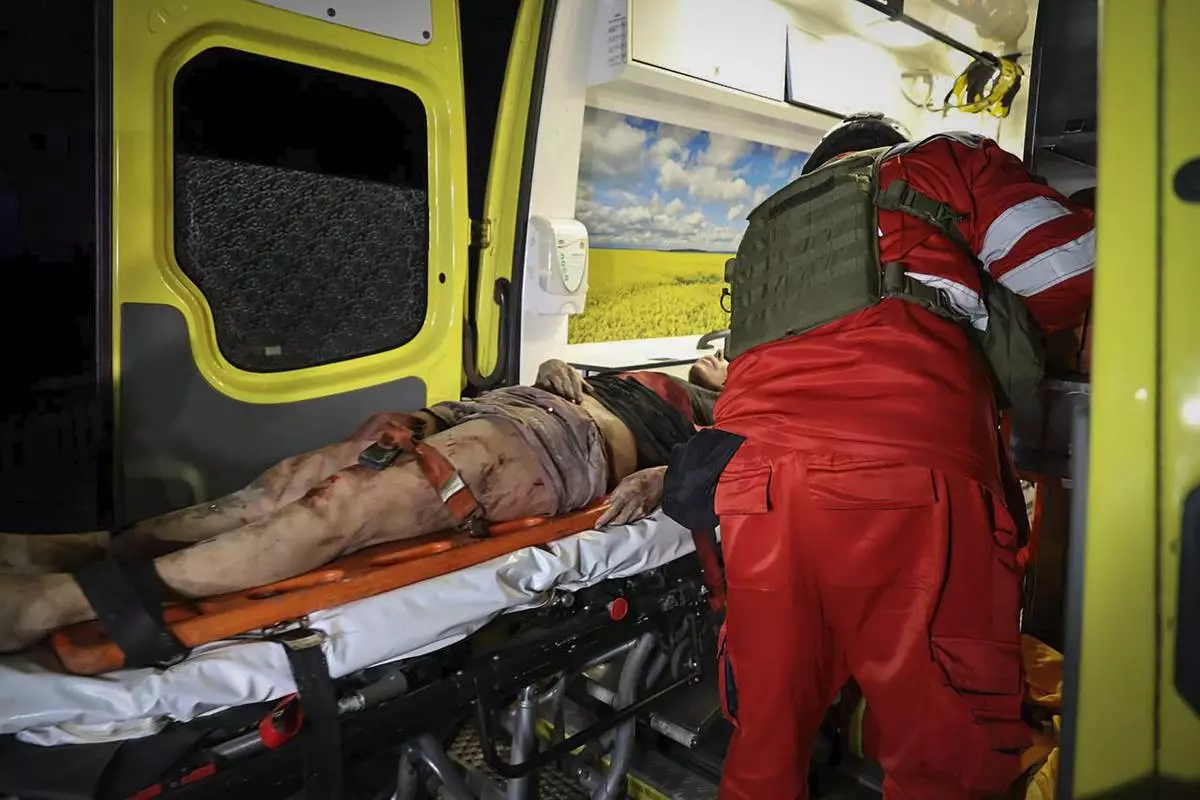
In this photo provided by Kharkiv City Administration, an ambulance evacuates an injured man after a multi-storey apartment building was hit by Russian attack in Kharkiv, Ukraine, late Wednesday, Oct. 30, 2024. (Kharkiv City Administration via AP)
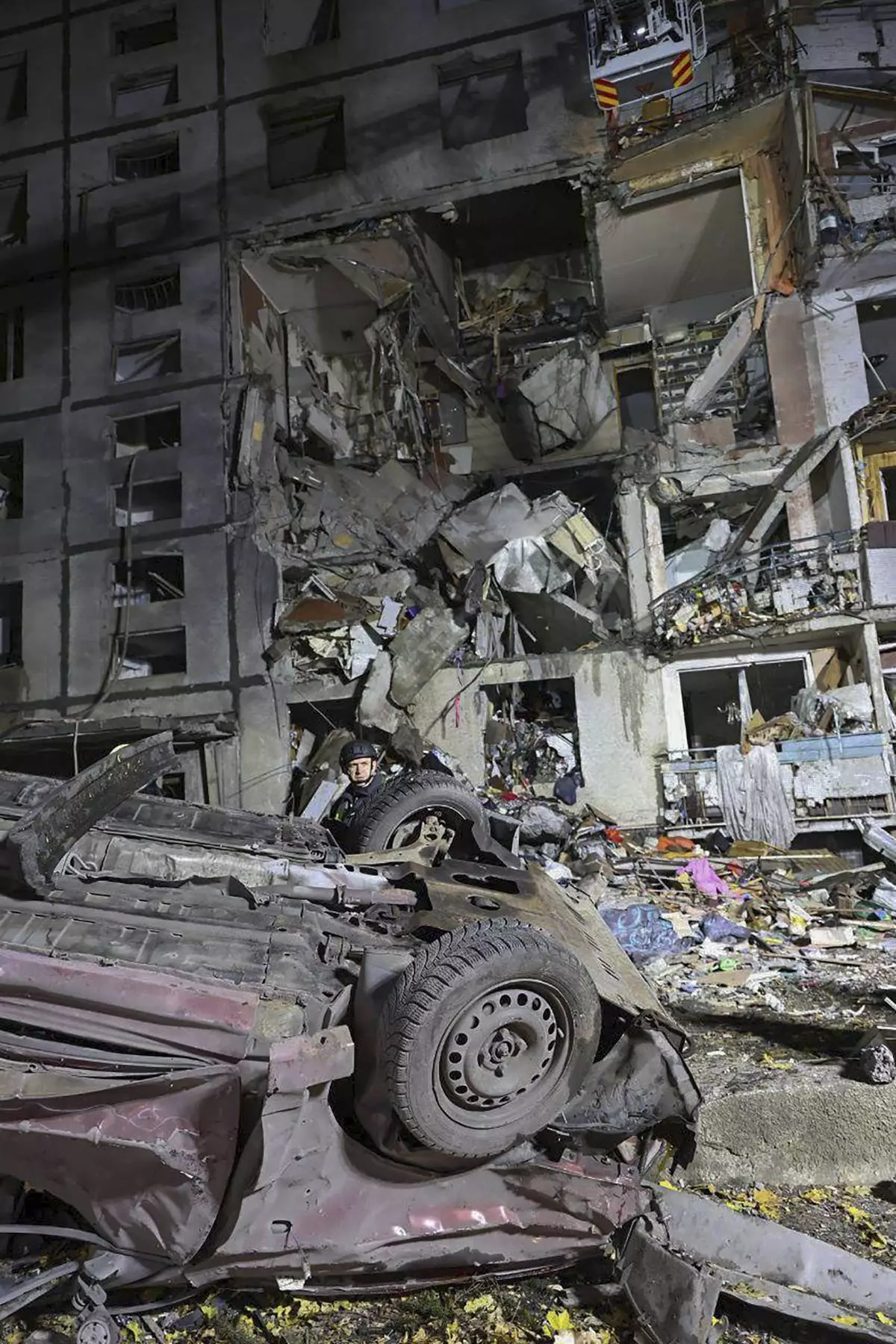
In this photo provided by Kharkiv City Administration a multi-storey apartment building is seen damaged by Russian attack in Kharkiv, Ukraine, late Wednesday, Oct. 30, 2024. (Kharkiv City Administration via AP)
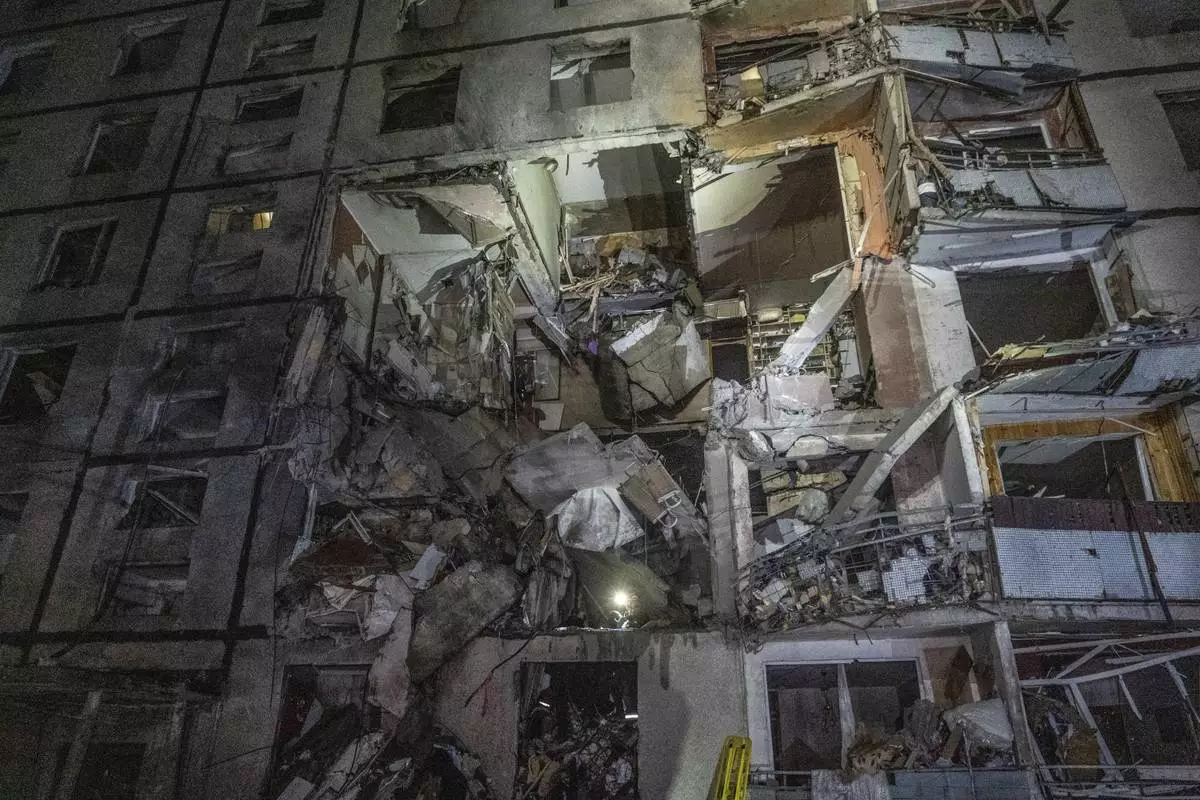
A multi-storey apartment building is seen damaged by the Russian attack in Kharkiv, Ukraine, late Wednesday, Oct. 30, 2024. (AP Photo/Andrii Marienko)
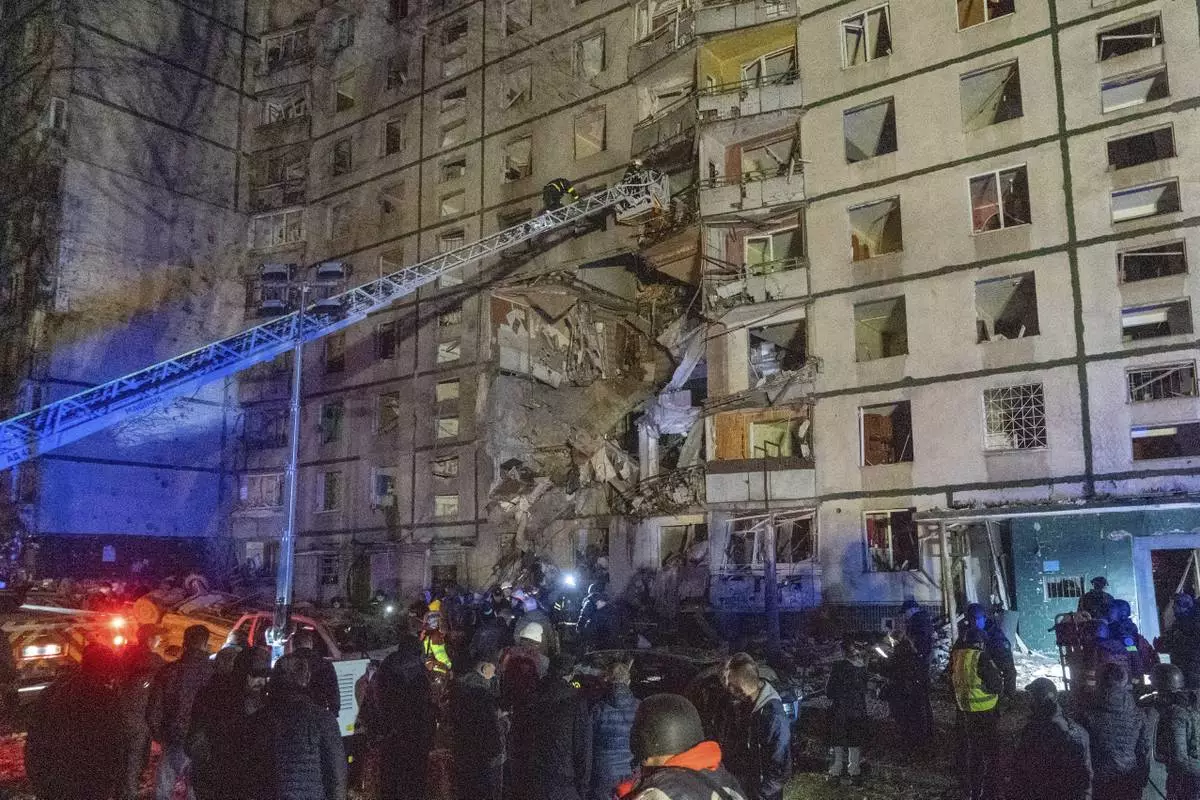
Rescuers help people after a multi-storey apartment building was hit by Russian attack in Kharkiv, Ukraine, late Wednesday, Oct. 30, 2024. (AP Photo/Andrii Marienko)
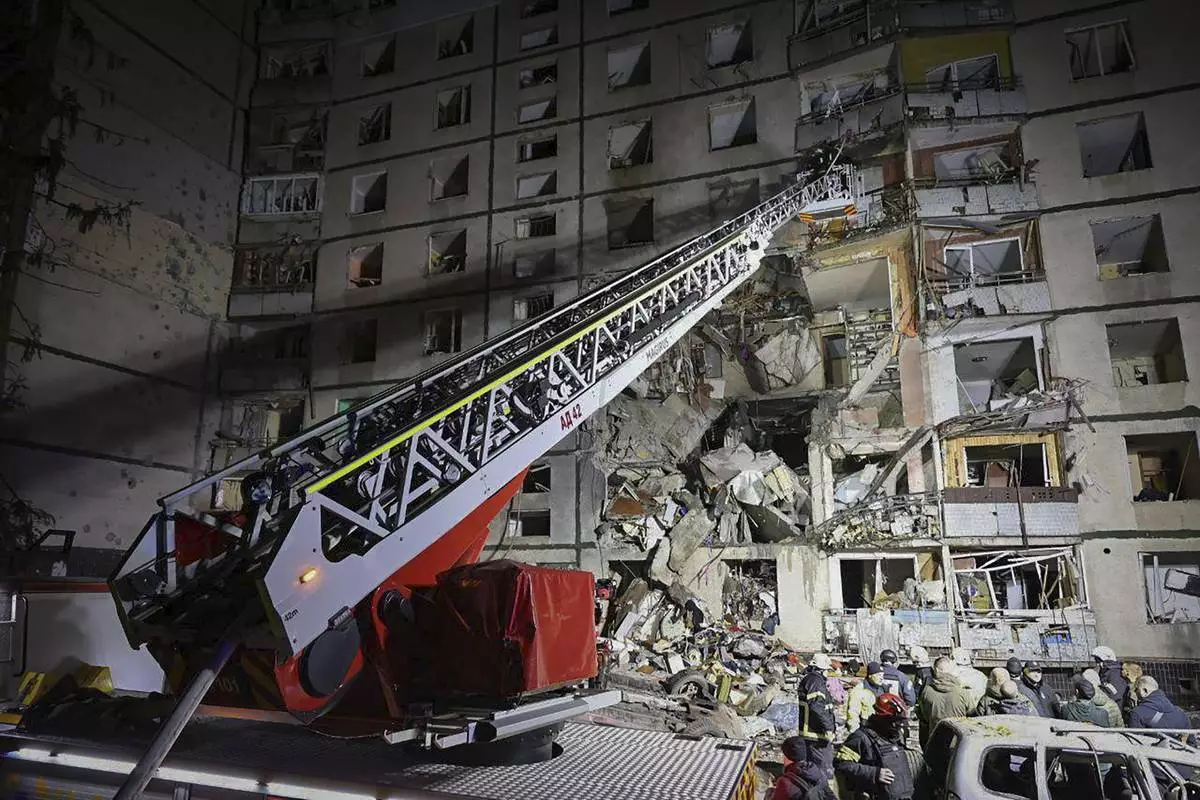
In this photo provided by Kharkiv City Administration a multi-storey apartment building is seen damaged by Russian attack in Kharkiv, Ukraine, late Wednesday, Oct. 30, 2024. (Kharkiv City Administration via AP)


